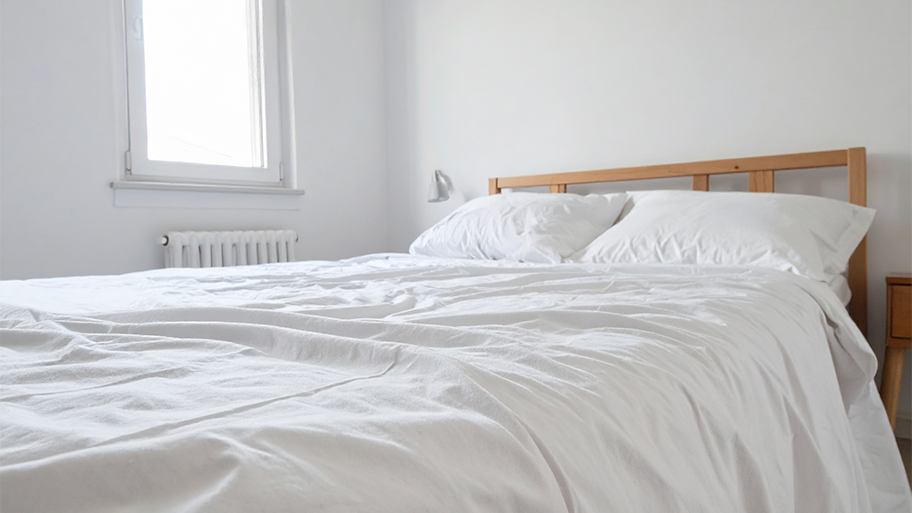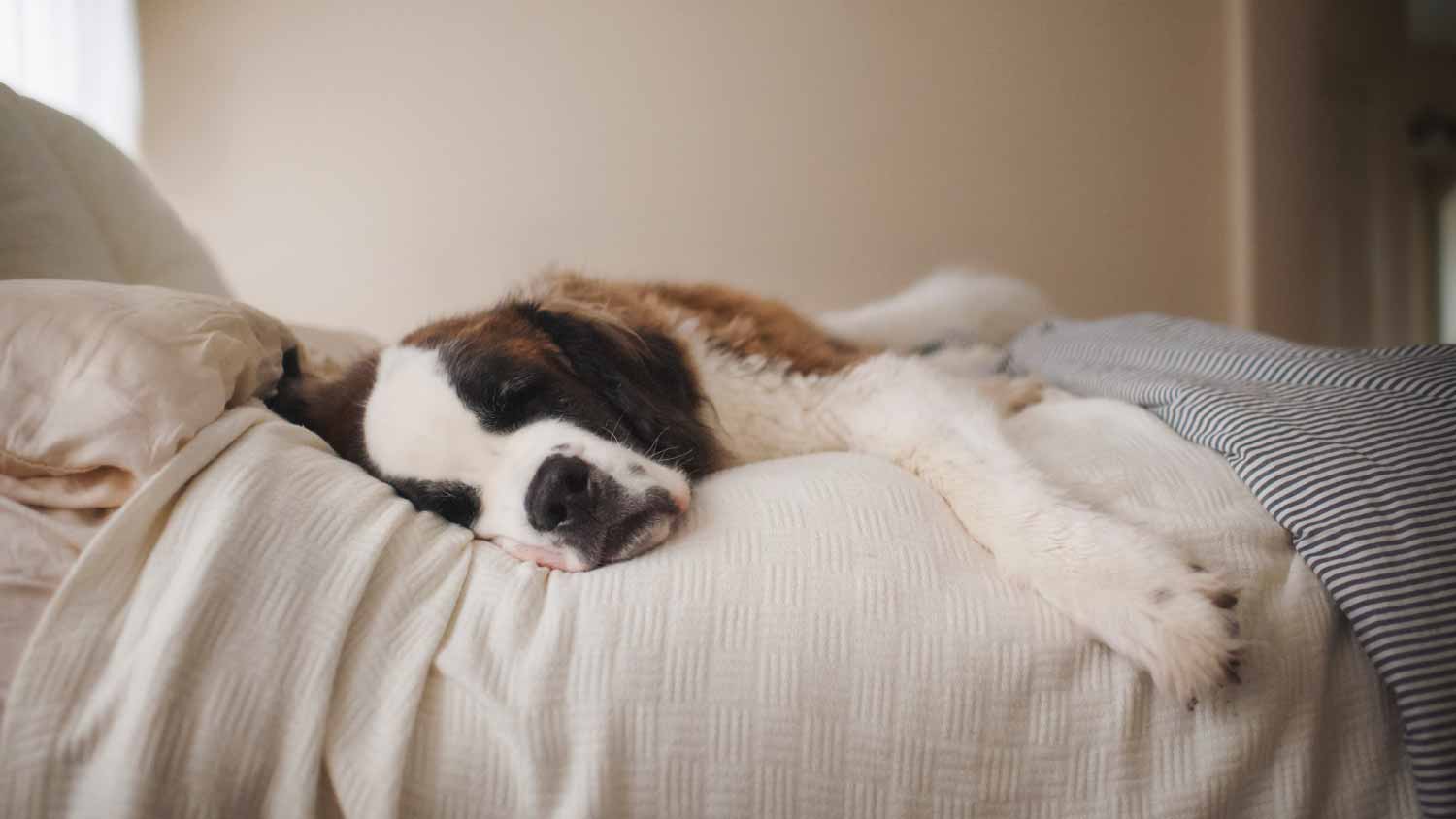
It’s important to know bed bug treatment costs if you have an infestation. Our guide covers different treatment methods and cost factors to eliminate these pests.
Distinguish between these two bloodsucking pests by sight and by bite


Bed bugs are seed-shaped, while fleas are oval-shaped.
Fleas attach to a host, while bed bugs hide and feed at night.
Bed bugs more commonly attack humans and fleas typically attack animals.
Bed bug bites are small, red welts that often appear in a row.
Flea bites are raised and itchy, similar to a mosquito bite.
When you’re dealing with painful, itchy bites and hitchhiking creepy crawlies disrupting your peace of mind, you might wonder whether bed bugs vs. fleas found their way into your home. While the thought can be unnerving, to say the least, learning to distinguish between the two will put you on the fast track to getting rid of them for good. Here’s how to tell the difference between bed bugs and fleas.
| Type of Difference | Bed Bugs | Fleas |
|---|---|---|
| Size | 1½–5 mm | 1–4 mm |
| Color | Reddish-brown | Dark brown |
| Number of Legs | 6 legs | 6 legs |
| Host Preference | Humans | Animals or humans |
| Habitat | Indoors | Indoors or outdoors |
| Disease | Does not carry disease | Can carry disease |

Bed bugs are shaped like an apple seed, ranging in size from 1½ to 5 millimeters long. Fleas have a more elongated oval shape and are often smaller than bed bugs, ranging in size from 1½ to 4 millimeters long.
Bed bugs are reddish-brown in color, and fleas are typically dark brown. However, the color of fleas can be difficult to distinguish due to their small size.
Both bed bugs and fleas feed on the blood of warm-blooded animals, including humans. The big difference between bed bugs vs. fleas is that bed bugs commonly attack humans, while fleas commonly attack animals and humans. Fleas also prefer attaching themselves to their host of choice, while bed bugs hide during the day and come out to feed once they sense a human or animal’s body heat. This behavior makes killing bed bugs instantly a real challenge, as it’s very difficult to reach them all.
So, do fleas bite humans in bed? While they won’t hide in your bed as bed bugs do, fleas can bite you in bed if you cuddle up with your pet at night. On the same token, bed bugs won’t infest your pets like fleas, but they can bite your pet if they sleep near an infested area.
Flea bites typically resemble a cluster of mosquito bites. They are often placed randomly and appear as small dots with a dark red center, resulting from the flea’s bite puncturing the skin to draw blood. These bites create an intensely itchy sensation which is immediate and persistent, sometimes developing into an open sore or blister within one or two days.
Bed bug bites manifest as raised, flat red welts from an allergic reaction to the bug’s saliva. These bites often appear in a straight row or line of about three or four bites, although they don’t always follow this pattern. It may take a few days or even up to a week for bed bug bites to become visible, and they tend to itch more as the effects of the saliva wear off.
Fleas and bed bugs share similar hitchhiking habits, but each has its preferred method of transportation. Fleas are highly agile and can jump onto a human or animal host from surrounding environments such as carpets, grass, or animals. Getting rid of fleas will usually require treatments to these affected areas in addition to treating their chosen host.
On the other hand, bed bugs make their way into your home via furniture, stuffed animals, clothing, luggage, and other soft items. Once they’re in your home, it can be incredibly difficult to get rid of bed bugs. They hide deep within the crevices of your mattress and box spring, baseboards, electrical outlets, and any other small gaps or cracks they can find.

Whether it’s fleas or bed bugs, an infestation can be overwhelming and downright disturbing.
In either case, you may need to call for reinforcements to quickly rid your home and family of these horrid bloodsucking pests. A local exterminator has access to the most potent and widespread treatments, offering the quickest means of eradicating them for good.
Bed bugs tend to be extremely difficult to get rid of, so you may want to invest the bed bug treatment cost, which typically falls between $1,000 and $2,500 for a serious infestation. DIY bed bug removal methods include using steam and heat to kill live bugs, spraying contact-kill sprays, using a HEPA vacuum, and deep-cleaning your home and linens. However, you’ll need the help of a professional exterminator to completely eradicate a major bed bug infestation.
Fleas can be tricky to get rid of as well—in addition to shampooing your pet, you’ll likely need to treat your carpet, lawn, and other areas where the tiny bugs may be hiding. Professional flea treatment costs between $75 to $400, depending on the size, severity, and location of the infestation.
From average costs to expert advice, get all the answers you need to get your job done.

It’s important to know bed bug treatment costs if you have an infestation. Our guide covers different treatment methods and cost factors to eliminate these pests.

Whether you have bugs, bats, or rodents invading your home, you’ll want to contact an exterminator quickly. Find out how much pest control costs in Houston, TX.

Moth infestations can cause damage to items in your home. Learn how much moth extermination costs and ways to save in this informative guide.

The termite inspection cost varies based on your location and reason for getting the service. Learn more about termite inspection budgeting.

“Water bugs” typically refer to a type of cockroach. Find out how to get rid of them instantly and keep them away for good in this handy DIY guide.

Cockroaches are annoying, but German cockroaches are on another level. Here’s how to get rid of German cockroaches and when to call in an exterminator.